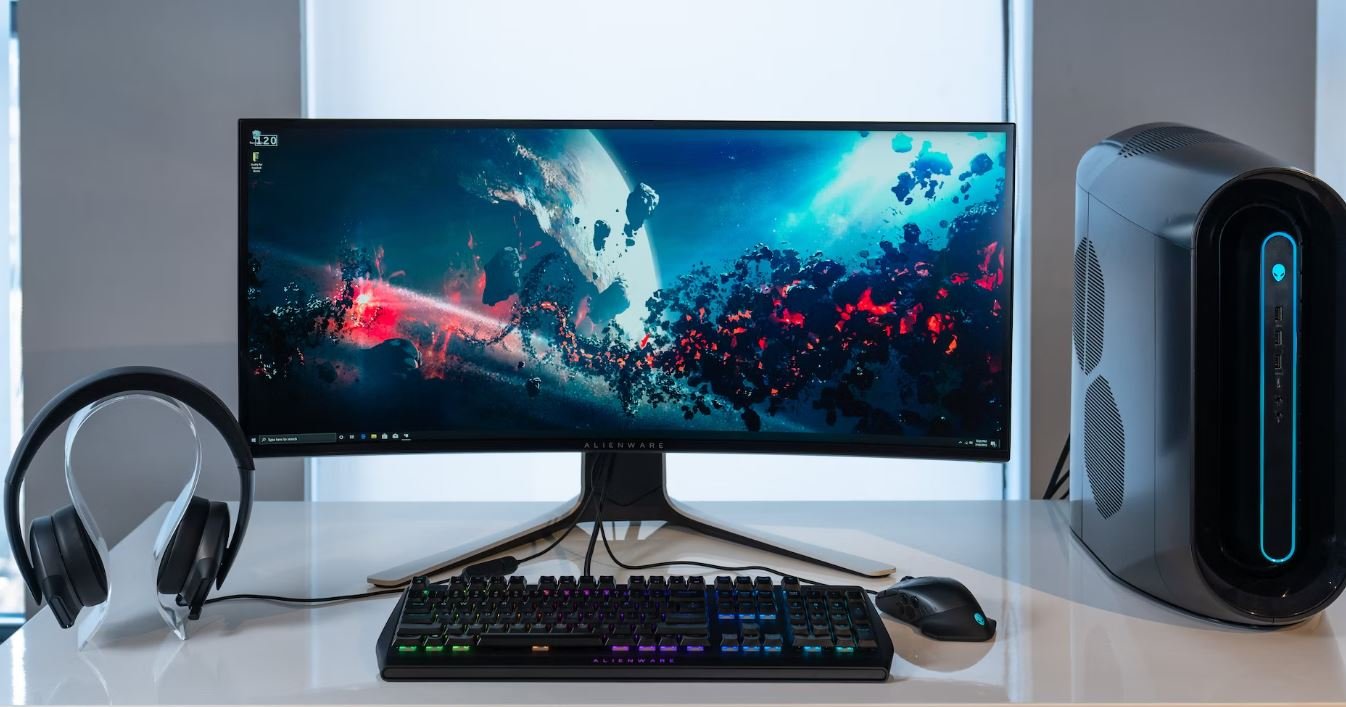Why Apps Disappear on Android Phones
Android phones offer a wide range of apps to enhance the user experience, but it can be frustrating when these apps mysteriously vanish from your device. While there can be multiple reasons behind this issue, understanding the common causes can help you prevent app disappearances and keep your Android phone running smoothly.
Key Takeaways
- Apps can disappear on Android phones due to various reasons, including software updates, storage issues, and accidental deletion.
- Ensure your Android device has enough available storage space to avoid apps disappearing.
- Keep your apps and operating system up to date to prevent compatibility issues.
- Backup your important data regularly to prevent permanent loss in case of app disappearance.
Common Causes of App Disappearance on Android
In some cases, apps may disappear after a software update. **App developers** regularly release updates to optimize their apps or introduce new features. *However, these updates can sometimes lead to compatibility issues with your device’s operating system, making the app incompatible and causing it to disappear from your phone.* To prevent this, ensure both your apps and operating system are always up to date.
Another common cause of app disappearance is **insufficient storage space** on your Android phone. Apps require a certain amount of storage to function properly, and if your device runs out of storage, apps may start disappearing. *Regularly check your phone’s available storage space and remove unnecessary files or apps to free up memory.*
How to Prevent App Disappearance
To prevent the sudden disappearance of your apps, follow these steps:
- Regularly update your apps: Keep your apps updated to ensure compatibility with the latest operating system version.
- Check storage space: Monitor your device’s available storage space and delete unnecessary files or apps to make room for new installations.
- Enable automatic backups: Backup your important data regularly to avoid permanent loss in case of app disappearance.
- Avoid unnecessary modifications: Be cautious when making system modifications or using apps that require root access, as they can lead to app compatibility issues.
Understanding Android App Permissions
When installing or updating apps on your Android phone, you may come across app permission requests. These permissions grant the app specific access to certain features or data on your device. It is important to evaluate these permissions and consider if they are necessary for the app’s functionality and your privacy. Here are some common permissions and their explanations:
| Permission | Description |
|---|---|
| Location | Allows the app to access your precise or approximate location. |
| Camera | Allows the app to take pictures and videos using your device’s camera. |
| Contacts | Allows the app to access your contacts or address book. |
What to Do if an App Disappears
If an app disappears from your Android phone, don’t panic. Try these troubleshooting steps to recover the missing app:
- Check the app drawer: Make sure the app is not simply hidden in a different app folder or screen.
- Search for the app: Use the search function on your device to locate the app by its name.
- Reinstall the app: If the app is completely missing, reinstall it from the Google Play Store or your app library.
By following these steps, you can address the issue of disappearing apps on your Android phone and enjoy a stable and uninterrupted app experience on your device.
Conclusion
Apps disappearing from your Android phone can be frustrating, but understanding the common causes and implementing preventative measures can help you avoid this issue. Remember to regularly update your apps, manage your storage space, and backup your data. By taking these precautions, you can maintain a seamless app experience on your Android device.

Common Misconceptions
1. Apps are randomly disappearing from Android phones
One common misconception is that apps randomly disappear from Android phones, leaving users puzzled and frustrated. However, this is not usually the case, and there are specific reasons why apps may appear to vanish.
- Some apps may automatically uninstall or disable themselves due to compatibility issues with an Android operating system update.
- Users may accidentally uninstall apps or move them to a different location on their phone, leading to a perception of disappearance.
- Apps may also be hidden or disabled by the device’s manufacturer or mobile carrier as part of bloatware removal or software customization.
2. All disappearing apps are infected by malware
Another misconception is that disappearing apps on Android phones are always infected by malware or have encountered a security breach. While it is important to be cautious about security, disappearing apps do not necessarily indicate malware presence.
- Apps can disappear if they have been manually uninstalled by the user or an administrator.
- In some cases, apps may appear to disappear if their icons have been removed from the home screen but are still installed on the device.
- Issues with app permissions or conflicts between apps can also contribute to apps disappearing or behaving unexpectedly.
3. System updates always cause apps to vanish
Many people mistakenly believe that every time they update their Android operating system, their apps will disappear. While app disappearance can be associated with system updates, it is not a guarantee.
- App removal during system updates usually occurs when an app is no longer compatible with the updated operating system version.
- Some system updates may modify the device’s default settings, including app visibility and organization, leading to a perception of app disappearance.
- App developers often release updates to address compatibility issues with new Android versions, minimizing the chances of app disappearance during updates.
4. Restoring a device will bring back all disappeared apps
Some individuals have the misconception that performing a factory reset or restoring a device will automatically bring back all disappeared apps. However, this assumption is not always accurate.
- Unless apps were previously backed up, a factory reset erases all user data, including apps and associated content.
- After a reset or restore, it is necessary to manually reinstall apps from the Play Store or through other app distribution platforms.
- Restoration of apps requires an active internet connection and may require re-entering user-specific information, such as account credentials or app settings.
5. Disappearing apps are always a device issue
Finally, it is a common misconception that disappearing apps are always a result of a device-related problem. While device issues can contribute to app disappearance, it is essential to consider other factors as well before attributing the problem solely to the device.
- A user’s Google account settings or synchronization settings may affect app visibility across multiple devices.
- App developers occasionally remove or hide apps from the app store, which can lead to apps disappearing from user devices.
- Temporary server or network issues between the device and the app store can also cause app disappearance temporarily.

Top Apps on Android
Here is a list of the top 10 most downloaded apps on Android devices based on data from Google Play Store.
| Rank | App Name | Number of Downloads |
|---|---|---|
| 1 | 5 billion+ | |
| 2 | 5 billion+ | |
| 3 | YouTube | 5 billion+ |
| 4 | Messenger | 5 billion+ |
| 5 | 1 billion+ | |
| 6 | 500 million+ | |
| 7 | Netflix | 1 billion+ |
| 8 | Snapchat | 1 billion+ |
| 9 | Google Chrome | 5 billion+ |
| 10 | TikTok | 1 billion+ |
These tables display the top apps that Android users frequently download and use. As indicated by the table, apps such as WhatsApp, Facebook, YouTube, and Messenger hold a significant market share on Android devices. The number of downloads suggests their popularity among smartphone users. It’s interesting to observe how social media platforms like Instagram, Twitter, and Snapchat also rank in the top-downloaded apps.
App Permissions on Android
Understanding app permissions can help you grasp why some apps may disappear from your Android device. Here’s an overview of common permissions requested by Android apps:
| Permission Type | Description |
|---|---|
| Location | Allows the app to access your device’s location through GPS or other means. |
| Camera | Enables the app to access and utilize your device’s camera for photos or videos. |
| Contacts | Gives the app permission to access your device’s contact list. |
| Microphone | Allows the app to access your device’s microphone for audio recordings or voice commands. |
| Storage | Enables the app to read, modify, or delete content on your device’s internal or external storage. |
| Phone | Allows the app to read phone status, including the device’s phone number and current cellular network information. |
| Calendar | Gives the app permission to access your device’s calendar events and reminders. |
| SMS | Enables the app to receive, send, or read SMS messages on your device. |
| Wi-Fi Connection | Allows the app to view information about Wi-Fi networking, such as whether Wi-Fi is enabled and connected. |
| Bluetooth | Gives the app permission to connect with nearby Bluetooth devices and use Bluetooth functionality. |
This table highlights essential app permissions that apps may request on Android. By understanding these permissions, users can make informed decisions regarding app installations and privacy concerns.
App Updates and Disappearances
Apps may disappear from an Android device for various reasons. Some possible factors contributing to app disappearances and updates include:
| Reason | Description |
|---|---|
| Outdated App | App developers may stop supporting older app versions, leading to them disappearing or becoming incompatible with newer Android releases. |
| App Removal by Developer | Developers may intentionally remove their apps from app stores due to business decisions, security concerns, or lack of resources. |
| Google Play Policy Violations | If an app violates Google Play Store’s policies, it may get removed by Google, resulting in its disappearance from Android devices. |
| Data and Security Issues | Apps posing risks to user privacy or containing malicious code may get removed or flagged, leading to their disappearance. |
| Incompatibility | Changes in Android operating system versions or device hardware may render certain apps incompatible and cause them to disappear. |
| User Uninstalls | Users may intentionally uninstall certain apps from their devices, resulting in the app’s disappearance from their app list. |
| Technical Errors | App updates or server issues can cause temporary glitches, leading to apps disappearing or not displaying properly. |
| Device Restrictions | In some cases, apps may be restricted or unavailable due to device-specific limitations or regional restrictions. |
| App Store Malfunctions | Errors or bugs within the app store itself can occasionally cause apps to disappear or prevent them from being downloaded or updated. |
| Unstable Internet Connection | Apps might fail to appear or update if the device has an unstable or unreliable internet connection. |
These tables shed light on the reasons why apps may disappear from Android devices. Understanding these factors can help users troubleshoot app issues and be aware of potential causes behind app disappearances.
App Storage Usage
App storage usage can impact the number of apps you can install on your Android device. Here’s a breakdown of average app storage requirements:
| App Category | Average Storage Size |
|---|---|
| Social Media | 100-150 MB |
| Games | 200-400 MB |
| Productivity | 50-100 MB |
| Health & Fitness | 20-50 MB |
| Entertainment | 100-200 MB |
| Utility | 10-50 MB |
| Education | 50-150 MB |
| Travel | 25-75 MB |
| Shopping | 50-100 MB |
| Music & Audio | 30-100 MB |
These tables provide an estimation of the average storage size for different app categories on Android. Users can use this information to manage their device’s storage and prioritize apps accordingly.
App Ratings on Google Play Store
Here are the app rating categories available on the Google Play Store:
| Rating Category | Description |
|---|---|
| 1 Star | Poor app performance, significant issues, or dissatisfactory user experience. |
| 2 Stars | Below-average app performance with notable flaws or limitations. |
| 3 Stars | Decent app performance with room for improvement or occasional issues. |
| 4 Stars | Good app performance with few minor issues or occasional bugs. |
| 5 Stars | Excellent app performance, highly satisfied users, and minimal or no issues. |
This table showcases the different rating categories on the Google Play Store, allowing users to gauge an app’s overall quality and user satisfaction based on the average rating provided by other users.
App Update Frequency
It’s important for app developers to regularly update their apps to provide bug fixes, new features, and improved performance. Here’s the frequency at which apps are typically updated:
| Update Frequency | Description |
|---|---|
| Weekly | Some apps receive updates on a weekly basis to continually enhance and maintain their performance. |
| Bi-Weekly | Many apps follow a bi-weekly update cycle, ensuring frequent updates without overwhelming users. |
| Monthly | Some apps opt for monthly updates, delivering bug fixes, feature implementations, or security enhancements. |
| Quarterly | Slightly less common, apps with quarterly updates prioritize major feature additions or significant improvements. |
| Irregularly | Certain apps may have an irregular update schedule, depending on development priorities or user feedback. |
This table emphasizes the varying update frequencies of apps on the Google Play Store, allowing users to understand how frequently they can expect new updates from different apps.
App Revenue Models
Apps employ various revenue models to generate income for developers and sustain app development. Here are some common revenue models:
| Revenue Model | Description |
|---|---|
| In-App Purchases | Users can make additional purchases within the app, such as unlockable features, premium content, or virtual items. |
| Advertising | Apps display advertisements to generate revenue through ad impressions or user interactions with the ads. |
| Freemium | Apps offer basic features or content for free and charge for access to advanced or premium features. |
| Subscriptions | Users pay a recurring fee (e.g., monthly or annually) to access premium content or services within the app. |
| Sponsorship | Apps receive financial support or resources from sponsors or partners in exchange for featuring their content or services. |
| One-Time Purchase | Users make a one-time payment to purchase the app outright, unlocking all features and content without additional costs. |
The table presents the revenue models commonly employed by apps, allowing users to understand how developers generate income and the potential monetization strategies behind their favorite apps.
App Review and Feedback Platforms
Users often leave reviews and provide feedback for apps on dedicated platforms. Here are some popular app review platforms:
| Platform | Description |
|---|---|
| Google Play Store | Users can leave ratings, reviews, and feedback directly on the app’s listing page on the Google Play Store. |
| Apple App Store | iOS users can leave reviews on the app’s listing page on the Apple App Store to share their experiences with the app. |
| Trustpilot | A user review platform where individuals can leave feedback and ratings for various services and apps. |
| Capterra | A review platform targeted at business software and app solutions, allowing users to provide feedback and ratings. |
| G2 | An app and software review platform featuring user reviews, ratings, and comparisons. |
| Amazon Appstore | Users can review and rate apps on the Amazon Appstore, sharing their experiences with other potential users. |
This table highlights some prominent platforms where users can leave reviews and share their feedback regarding apps. These platforms serve as valuable resources for users to make informed decisions about app installations and usage.
App Development Languages
Developers utilize various programming languages when creating Android apps. Here is a list of commonly used languages:
| Language | Description |
|---|---|
| Java | Java is the traditional and widely adopted language for Android app development, offering extensive libraries and developer tools. |
| Kotlin | Kotlin is a modern programming language officially supported by Google for Android app development, known for its conciseness and safety features. |
| C++ | C++ is often used when developers require low-level programming or performance optimization in combination with Java or Kotlin. |
| C# | C# can be used with Xamarin for cross-platform app development, allowing code sharing between Android and iOS projects. |
| HTML/CSS/JavaScript | Web technologies like HTML, CSS, and JavaScript combine with frameworks like Apache Cordova or React Native for hybrid app development. |
This table explores the programming languages commonly used for Android app development, showcasing the diversity of languages available to developers when creating apps for the Android platform.
To sum up, the article discusses various aspects related to the disappearance of apps on Android devices. It covers the top downloaded apps, app permissions, reasons for app disappearances and updates, app storage usage, app ratings, update frequency, revenue models, app review platforms, and the programming languages used for app development. Understanding these elements contributes to a better comprehension of the Android app ecosystem, user experiences, and the underlying factors influencing app availability and performance.
Frequently Asked Questions
Why do apps disappear from my Android phone?
Apps can disappear from your Android phone due to various reasons. Some possible causes include accidental deletion, app updates or uninstallations, system updates, storage issues, and malware or virus infections.
How can I find a disappeared app on my Android phone?
To find a disappeared app on your Android phone, you can try the following: 1. Search for the app in the app drawer or home screen pages. 2. Check your app library or ‘All Apps’ list. 3. Navigate to ‘Settings’ > ‘Apps’ or ‘Applications’ to see if the app is disabled or hidden. 4. Use the Play Store app to search for the app and reinstall it.
Why do some apps automatically uninstall on my Android phone?
Some apps may automatically uninstall on your Android phone due to app limitations, incompatibility with the device’s operating system, system optimizations, or user-specific settings such as automatic clearing of unused apps.
How do I prevent apps from disappearing on my Android phone?
To prevent apps from disappearing on your Android phone, you can: 1. Avoid accidental deletion by being cautious when managing your apps. 2. Disable automatic app updates or uninstallations. 3. Regularly check for system updates and install them. 4. Maintain sufficient storage space on your device. 5. Install and regularly update a reputable antivirus app to protect against malware or virus infections.
Can a factory reset restore disappeared apps on my Android phone?
A factory reset can restore disappeared apps on your Android phone only if the apps were pre-installed system apps. User-installed apps that were removed or deleted will not be restored by a factory reset unless you reinstall them manually.
Do app disappearances indicate a virus or malware on my Android phone?
While app disappearances can sometimes be caused by virus or malware infections, it doesn’t necessarily mean your Android phone is infected. Other factors, such as accidental deletion or system updates, can also lead to app disappearances.
Why can’t I reinstall a disappeared app from the Play Store?
If you’re unable to reinstall a disappeared app from the Play Store, it could be due to several reasons: 1. Compatibility issues with your device or current Android version. 2. App removed from the Play Store by the developer. 3. Your Google account is experiencing issues. 4. The app is restricted or unavailable in your region.
How can I prevent accidental deletion of apps on my Android phone?
To prevent accidental deletion of apps on your Android phone, you can use the following methods: 1. Lock or hide important apps using app lockers or hidden folders. 2. Enable ‘App Lock’ in device settings to require authentication before uninstalling apps. 3. Be cautious when rearranging your home screen pages or deleting apps in bulk.
Can I recover data from disappeared apps on my Android phone?
Recovering data from disappeared apps on your Android phone depends on the specific app. Some apps may store data in the cloud, which can be retrieved by signing in to your account. However, if the app data was locally stored and not backed up, it may be challenging to recover unless you have previously created backups.
Are disappeared apps permanently lost on my Android phone?
Disappeared apps may not be permanently lost on your Android phone. You can try searching for them following the methods mentioned earlier, checking disabled or hidden apps, or reinstalling them from the Play Store if available. However, if an app was intentionally uninstalled or removed from the Play Store, it may not be recoverable.





